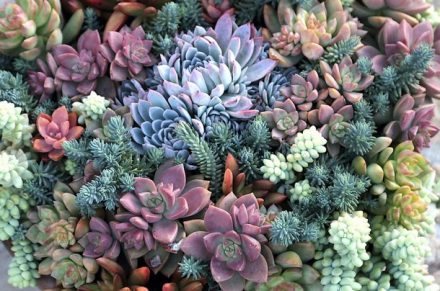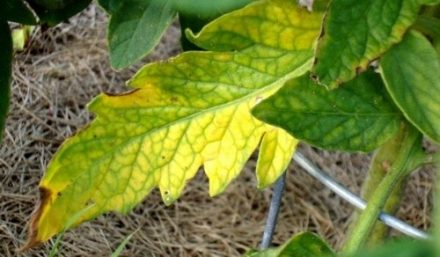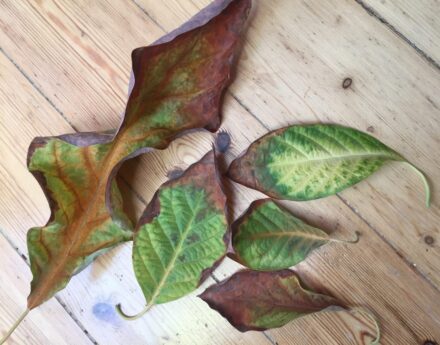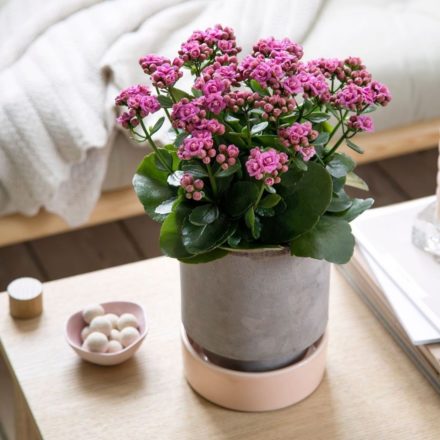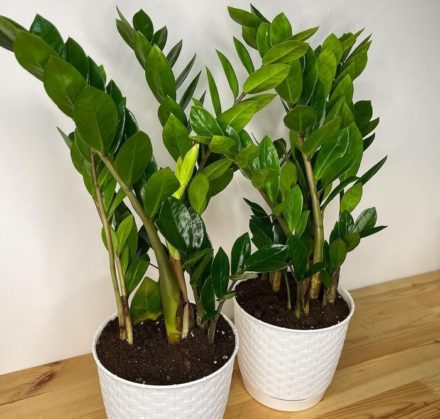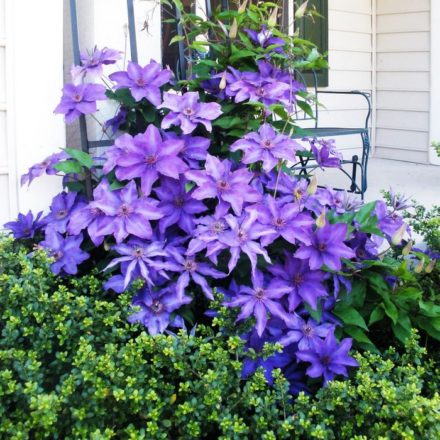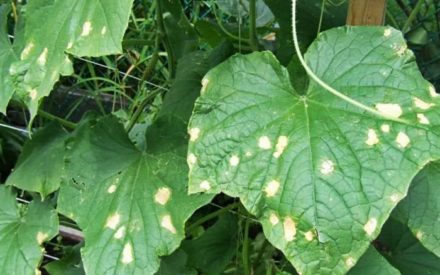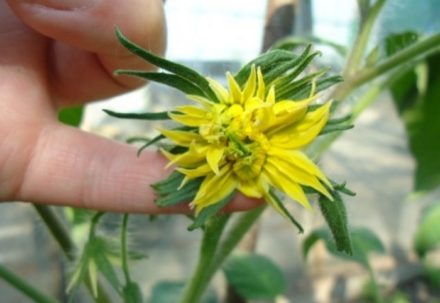Hosta is a low-growing plant that has won the love of gardeners due to its unpretentiousness to agricultural technology. Despite the low requirements for caring for its plantings, sometimes the garden crop loses its attractiveness due to yellowed leaves.
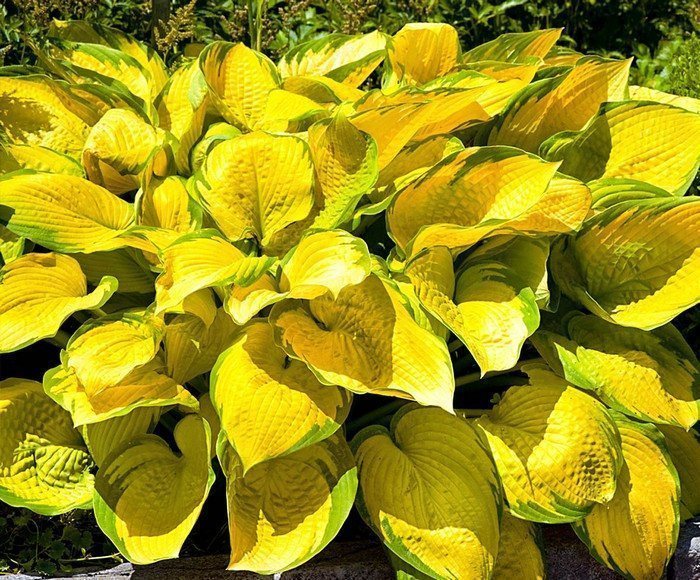
Incorrectly selected site for planting
Hosta is one of the rare specimens of garden plants with a large selection of varieties. Varieties differ from each other in the color of the foliage. Basically, these are blue, green and yellow groups. The planting area is determined by the color of the plant leaves. Blue varieties do not tolerate sunny areas. In open areas, the color of the leaves quickly loses its attractiveness, and the hostas begin to turn yellow.
Varieties with yellow foliage, on the contrary, need sunlight and feel great in sunny flower beds.
Green varieties of hosta are recommended to be planted in the shade or in partial shade. The "openwork" shadow will make such specimens more attractive.
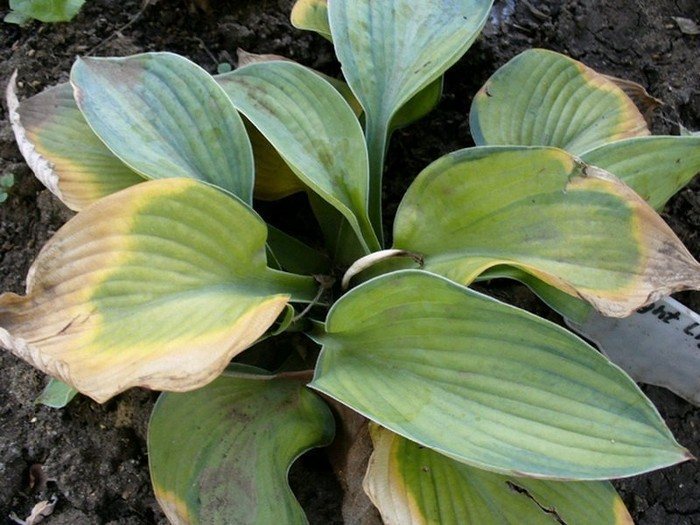
How to help
If it so happens that the site is chosen incorrectly and the leaves of the garden plant begin to turn yellow, it is necessary to urgently transplant. The culture tolerates such manipulations normally.
In the first days after transplantation, the hosta needs to be watered daily with a moderate amount of settled water.
Insufficient watering
The problem of yellowed leaves may be due to a lack of moisture in the soil.Regardless of where the succulent is planted, it needs periodic watering. Even sun-loving varieties are recommended to be watered at least 3 times a week so that the fleshy leaves do not experience moisture deficiency.
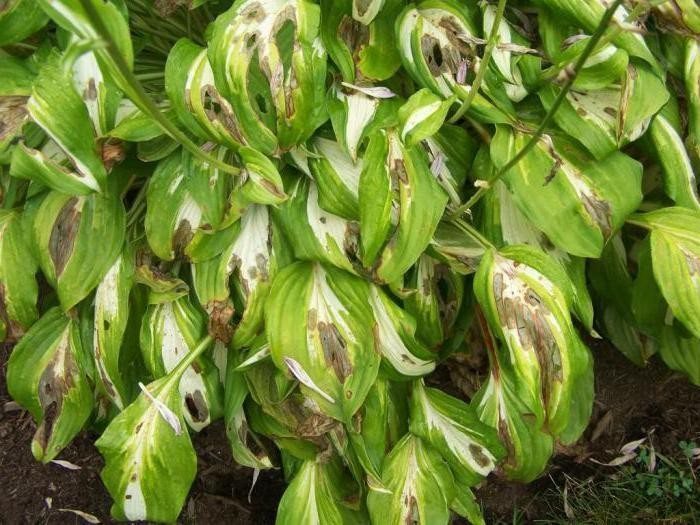
How to help
In the case when the foliage turns yellow due to drying out of the soil, it is important to urgently review the watering regime. Plants are watered with plenty of moisture and the soil is mulched over the root system. Such actions will help save the ornamental plant.
Night frosts
Another reason for the appearance of yellow leaves may be spring night frosts. Some varieties are not afraid of such changes and do not react to low night temperatures, others turn yellow and dry out.
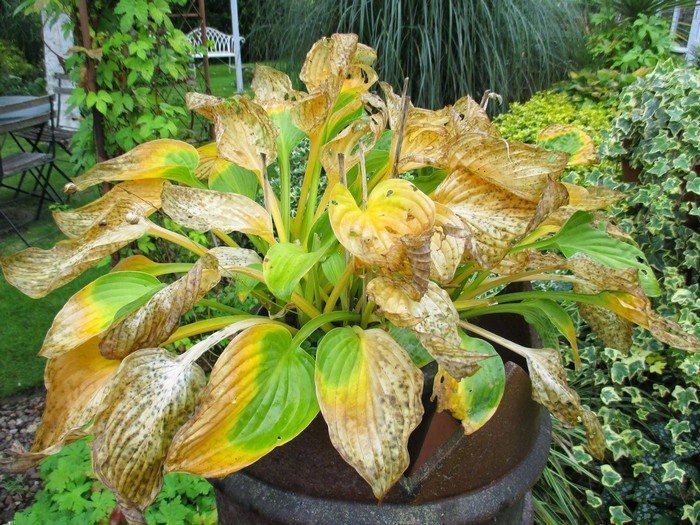
How to help
To prevent this from happening, you need to listen to weather forecasters and, if necessary, cover your garden crops. If the leaves have already turned yellow, then they need to be cut off and wait for new leaves to appear.
Diseases
The cause of yellowing and wilting of the crop can be fungal diseases. This effect can be caused by:
- phyllosticosis;
- root rot;
- rust.
These diseases first affect the green mass, and then can completely destroy the flower.
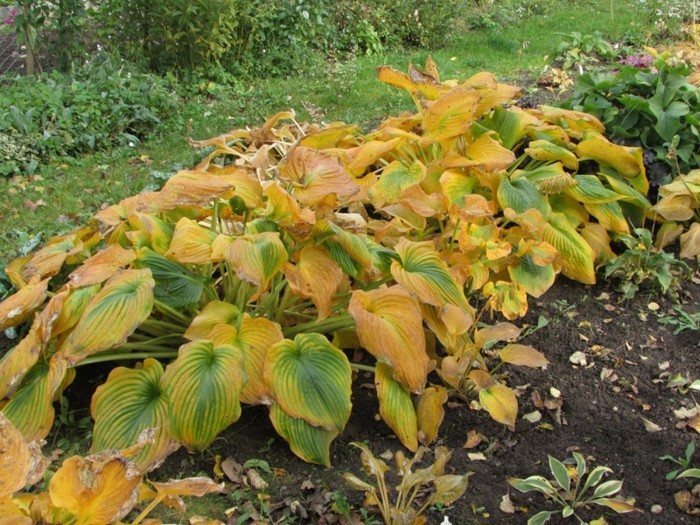
How to help
Treatment depends on how damaged the plant is. All affected areas are removed, and then treated with special fungicidal preparations.
Most often, diseases appear in thickened plants. As a preventative measure, it is recommended to plant bushes.
Frequent feeding
Many gardeners make the mistake of carrying out frequent fertilizing. Too much fertilizer can lead to the problem of yellowed green matter.
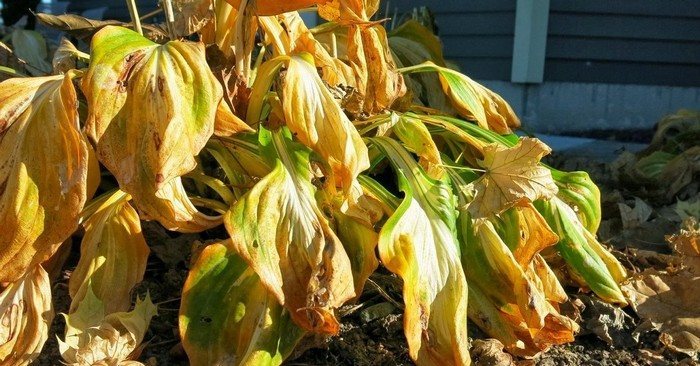
What to do
The plant needs feeding in spring and autumn. To ensure that the plant pleases gardeners throughout the growing season, it is better to use complex fertilizers for succulents. They contain the necessary amount of microelements and vitamins. If after fertilizing you notice that the foliage is turning pale, water with plenty of water.
Remember that it is better to leave the plant underfed than to overfeed!
Virus X
This is a dangerous disease that some specimens can suffer from for a long time, and those growing nearby die immediately. Unfortunately, this disease is incurable.
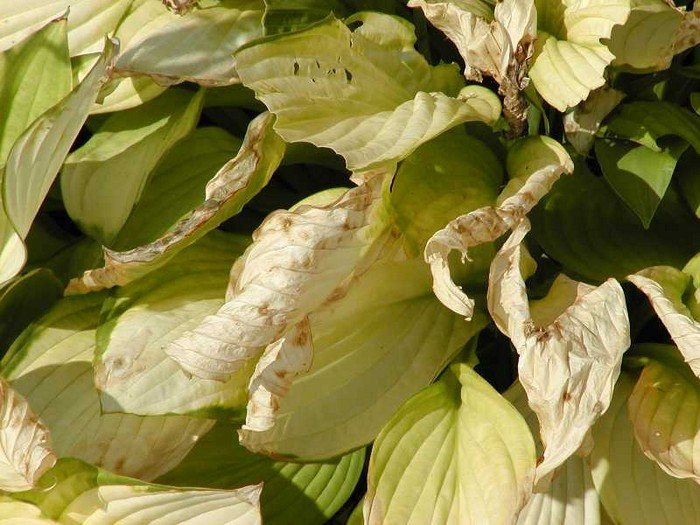
What to do
A bush infected with the X virus must be removed so that nearby plants do not become infected.
Insect pests
Insects can also cause yellow leaves. Spider mites and aphids can settle on the host.
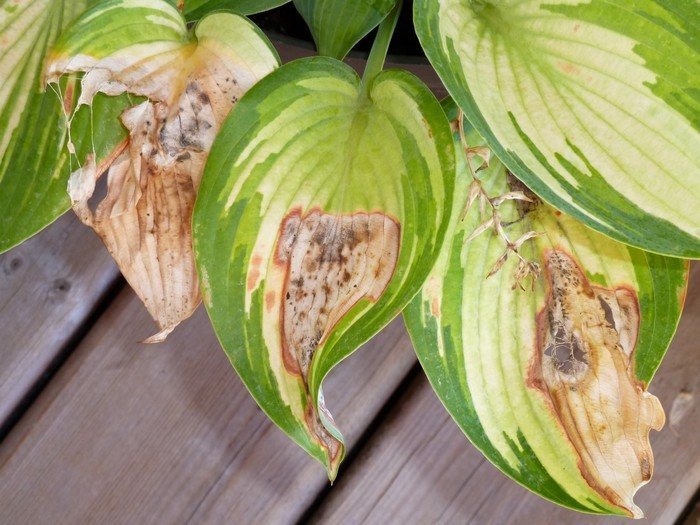
What to do
If uninvited guests appear on the bottom of the sheet, treatment is urgently required. Treatment can be carried out using both folk remedies and insecticides. Among folk remedies, soap solution is often used. Dissolve 1 piece of laundry soap in a bucket of water and spray.
To ensure that the hosta on your site is always attractive, pay attention to the plant and carry out proper agrotechnical care.


